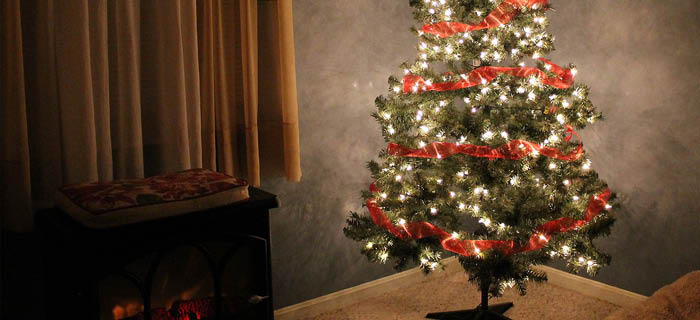Real vs Fake trees this Christmas

Should I buy a real or fake Christmas tree?
What’s greener – a real Christmas tree or a fake one?
Both real and plastic trees have an environmental impact. Plastic trees are made from refined fossil fuels and the manufacturing process results in carbon emissions, but once created they can be used for many years. Alternatively, we collect and compost real Christmas trees from the kerbside every year, a process that both emits and captures carbon dioxide.
Explore the real vs fake tree options
Not sure whether to choose a real or fake Christmas tree this year? Keep reading to find out more about the eco-friendly credentials of each.
A real Christmas tree
The carbon emissions released by composting Christmas trees can be described as carbon neutral since the process is not adding to the overall amount of carbon dioxide in the atmosphere. This is called ‘biogenic carbon’.
A Christmas tree absorbs carbon from the atmosphere as it grows and stores it safely within its leaves, branches and trunk. Then, after Christmas, your tree can be composted if you leave it outside for us to collect. The stored carbon will then either be locked away in the organic material or released back into the atmosphere, where next year’s Christmas trees are already working hard to consume carbon emissions.
The carbon cycle starts again when we buy our next Christmas tree, limiting the overall amount of carbon we add to the atmosphere. The composting process significantly reduces the carbon footprint by up to 80%.

Buy a new plastic Christmas tree
The carbon that can have an atmospherically warming impact is the stuff ‘added’ to our atmosphere. This is called non-biogenic carbon or ‘anthropogenic carbon’.
Over millions of years, living organisms collect carbon and store it deep underground in the form of fossil fuels like coal or oil.
Burning these fuels or refining them to make plastic Christmas trees, releases large amounts of previously trapped carbon into the atmosphere.
The environment cannot collect and store this carbon quickly enough to prevent it from building up. A process that gradually warms our home planet.
Although, all is not lost! If you plan to reuse your plastic Christmas tree, this can dramatically reduce your carbon impact.

Reuse a plastic Christmas tree
A plastic tree is made from refined fossil fuels and adds to the carbon in our atmosphere (non-biogenic carbon) rather than removing, storing and reusing the carbon (biogenic carbon).
However, your carbon impact really depends on your current situation or where you buy your tree.
If a plastic tree is tucked away in your loft, we recommend that you use it for as long as possible. Or buy a second-hand Christmas tree from one of our Reuse Shops. Here, you will also find plenty of Christmas decorations to make your tree sparkle!
Using an artificial tree 7-20 times (depending on the size), it can be better for the environment than a commercially grown tree.

Real vs fake trees – which has won you over?
